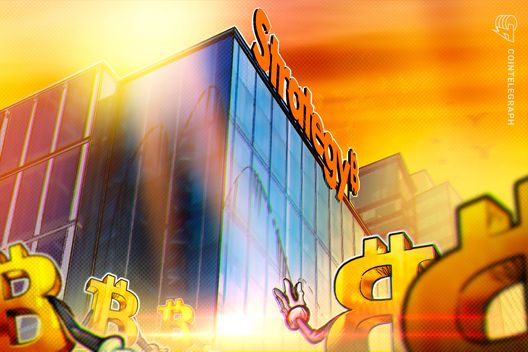- Polygon’s Heimdall consensus layer was down for 1 hour today due to a consensus bug.
- The Bor layer stayed live, and transactions continued uninterrupted.
- The bug follows the recent complex Heimdall V2 upgrade.
Polygon, one of Ethereum’s leading Layer 2 scaling solutions, suffered a temporary outage on Wednesday, July 30, 2025, that halted its Heimdall consensus layer for approximately one hour.
Notably, the unexpected disruption came just weeks after the network’s most technically complex upgrade since its inception in 2020.
Validator exit triggered the rare failure
The outage began around 09:30 UTC when Heimdall, the consensus layer responsible for managing validators and syncing Polygon’s proof-of-stake chain with Ethereum, suddenly became unresponsive.
According to an official statement from the Polygon Foundation, the incident was caused by a validator unexpectedly exiting the network — a rare event that the system had not been programmed to handle.
This unusual validator exit led to a “consensus bug” that halted checkpointing and caused a temporary break in chain progression.
Polygon confirmed that the chain’s “liveliness”— or its ability to process and execute transactions — remained intact throughout the disruption, thanks to the Bor layer, which continued to produce blocks without interruption.
Bor stays live, but RPCs falter
While the core functionality of the network was preserved, the user experience told a different story.
According to an update from the Polygon Foundation, due to the outage, several RPC providers experienced sync inconsistencies across their Bor nodes.
This created confusion for users and dApps who rely on explorers and API endpoints to verify network status and transactions in real time.
Some users mistakenly believed the entire network was offline.
Polymarket, a major prediction market platform built on Polygon, briefly showed error messages during the downtime, further adding to the perception that funds or trades were stuck.
Polygon’s team later clarified that while validator data and checkpoint information were temporarily inaccessible, the chain itself never stopped processing transactions.
In their words, the situation “triggered a false alarm” due to the network’s limited handling of validator exits.
A bug weeks after a major upgrade
The timing of the incident was notable. Earlier in July, Polygon launched Heimdall V2, an upgrade built on CometBFT and Cosmos-SDK v0.50.
The upgrade aimed to reduce finality times to around five seconds and boost scalability.
However, the update also added new complexity to the system, introducing potential points of failure.
Polygon co-founder Sandeep Nailwal described it as the most technically complex hard fork since the protocol’s launch in 2020.
The outage has now raised questions about whether the complexity introduced with Heimdall V2 may have outpaced the system’s preparedness for rare scenarios.
This isn’t the first time Polygon has faced such disruptions. In March 2022, an error in Heimdall V1 resulted in several hours of downtime.
Similarly, in March 2024, Polygon’s zkEVM network suffered a 10-hour outage tied to sequencer issues.
User confidence under pressure
The incident comes at a time when trust and uptime are critical.
With over $1.4 billion in total value locked on Polygon, many users rely on the protocol’s availability to move and withdraw funds without disruption.
Although transactions continued behind the scenes, the RPC and explorer issues impacted user trust and caused visible friction.
Polygon’s native token, POL, fell nearly 3% during the incident and was trading at $0.22, reflecting trader unease amid rising competition in the Layer 2 space.
Although the chain remained technically live, the perception of downtime — especially for traders — can be just as damaging.
Other blockchains have faced similar issues. Just a day earlier, Hyperliquid reported an outage caused by a spike in traffic, and Solana has dealt with multiple outages over the years that resulted in financial losses for DeFi users.
Polygon says fix is in place
Polygon’s development team acted quickly, identifying the issue and deploying a patch within an hour. By 11:01 UTC, the Heimdall consensus layer was fully restored.
The Polygon Foundation has since confirmed that it is working closely with RPC providers to resolve any lingering sync issues and restore complete availability for all users.
However, the team has not yet detailed whether future upgrades will include mechanisms to better handle validator exits.
The post Polygon team blames temporary outage on suspected “consensus bug” appeared first on CoinJournal.



